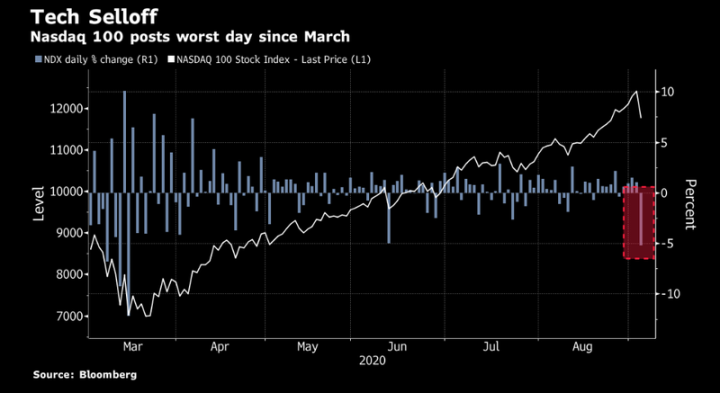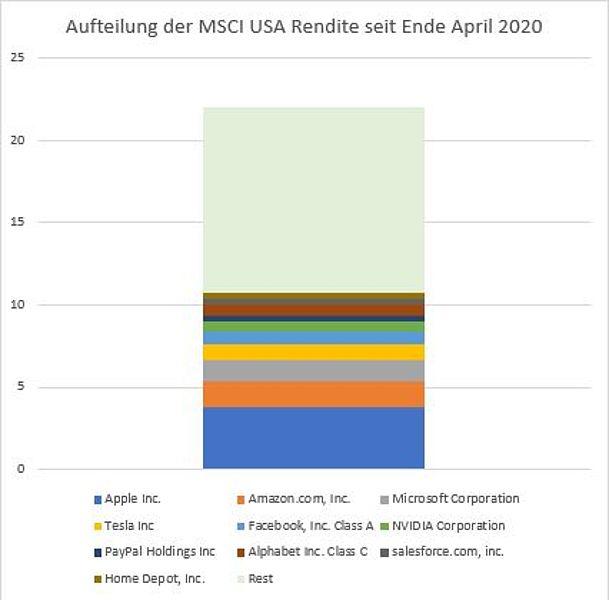Severe correction in the Nasdaq 100: That's good!

Dr. Martin Schlatter, CEFA
Financial Markets
The sell-off in the highest-capitalization technology stocks from early September sent the Nasdaq 100 Index down 5.2% for the day and the less technology-heavy S&P 500 Index down 3.5% as well.
The sell-off in the highest-capitalization technology stocks from early September sent the Nasdaq 100 Index down 5.2% for the day and the less technology-heavy S&P 500 Index down 3.5% as well.
Is this now the end of the stock market rally?
We don't think so, but it is always healthy when overly euphoric investors without sufficient risk awareness are brought back down to earth (investment) reality by the normative power of the factual.
In recent months in the U.S., the stock returns of a few large-cap stocks have completely decoupled from the rest of the market. Over the last four months, the U.S. market (MSCI USA) has returned about 22%. Only 10 companies are responsible for half of this 22%, which corresponds to an increase in market capitalization of a staggering USD 5,682 billion. In particular, the companies Apple, Amazon, Microsoft, Tesla, Facebook and Alphabet (Google) have contributed significantly to this wonderful increase in money.
One can ask whether this can really be sustainable. Apple, for example, is weighted higher in the global stock market index in terms of market capitalization than the whole of Great Britain. Tesla has performed 220% in the last 4 months, is now twice as big as Toyota and represents one third of the world market capitalization of all car producers. Tesla produced 80,000 vehicles in Q2, compared to global car production of over 15 million vehicles.
Such distortions occur when investors chase short-term performance trends (in financial jargon: price momentum), but ignore the relationship with fundamental company parameters, such as sales growth, margins, etc. The high market capitalization of these companies means that they are not in a position to make the right decisions.
Due to their high market capitalization, these companies have a very large influence on the index return. If we look comparatively at an index on which each stock has an equal weighting, the September 3, 2020 collapse looks different:
normal weighting vs equal weighting
Standard & Poors -3.5% vs -2.4%
Nasdaq 100 -5.2% vs -4.3%
From this difference, we can conclude that the largest companies only partially represent the market.
We know that stock market returns are mostly determined by so-called risk factors (typical: market risk, large/small, cheap/expensive, trending/non-trending). It should give pause for thought that the big tech stocks also dominate many factor portfolios. Apple, Amazon and Microsoft are all represented in growth, quality and even low risk factor portfolios. This shows that very different types of investors are investing in the same stocks. "Werch ein Illtum" (Jandl), if they then still think that they are well diversified across different factor portfolios.
We believe that this correction is more an expression of short-term (mis)speculation (keywords: day traders, short-term options and option expiration) than a fundamental change in the fundamental success factors for stocks. A well-constructed factor portfolio takes into account increased concentration risks and also finds attractive growth pearls outside the big tech companies.



